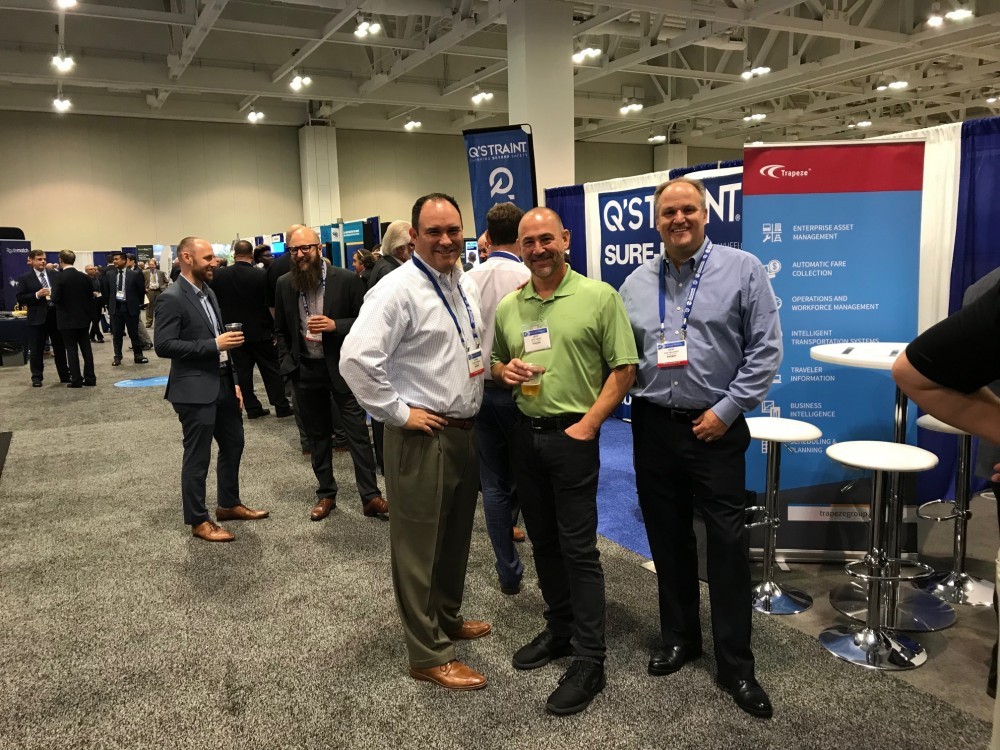It seemed like yesterday when The 9 Transit Trends That’ll Move Us in 2017 was published yet who knew we’ve already snuggled into the fall season?
But before you slip on that pair of fluffy slippers, sip on that cup of Pumpkin Spice Latte, and admire that fall foliage from your windows, let’s see how we’ve fared so far with the trend predictions. Who was right? Have we made any progress? We asked some of the original contributors to provide us with their updates and what the public transit industry can do to keep moving forward.
Human-Centered Designs will be Here to Stay
"Interest in improving bus networks continues to grow, with major redesigns implemented in Columbus, Baltimore, and several other cities. Smarter advocacy is also happening. Of course, even bus network redesign, critical as it is, shouldn't be seen as the sole step in improving bus service. Key problems include chronic underinvestment, transit-hostile land use patterns, and street design priorities that treat transit riders as inferior. Transit agencies’ management team control none of those things. They require broader advocacy through municipal, state governments, and transit agencies."
– Jarrett Walker, International Consultant in Public Transit Network Design and Author of Human Transit
New and Unexpected Markets will Help Improve Ridership
“This trend is not only attainable but also appears to be gaining momentum. It’s no longer a viable model to run traditional, high-cost buses in areas of lower population and employment density. Emphasis on technologies to customize rides in an Uber or Lyft fashion is increasing and the transit industry seems to be openly embracing shared ride and demand response driven strategies. At HART, our first mile-last mile pilot service, HyperLINK, is gaining popularity. It will soon move out of the pilot phase and become a vital mode within the organization in peripheral service areas, and feed pre-existing fixed routes.”
– William Mozal, Scheduler II: Paratransit & Flex - Van Operations, Hillsborough Area Regional Transit Authority (HART)
Big Data will Help Refine Connected Mobility
“With all the hype surrounding autonomous vehicles, TNCs, and other developing alternatives, I’m certain there will be a place for rail transit as we know it for decades to come. It’s the simple fact of space on roads. Putting one, two, or six people in a vehicle or pod (autonomous or not) will never substitute all the vehicles removed from the street with the incorporation of a streetcar, LRV, metro, commuter or even intercity train. It’s about simple math, volume, and real estate on the road.
Autonomous vehicles are just another piece of the transit puzzle, feeding an integrated network of modes including “rail”. Feeding is the keyword – each mode working together. Modes working seamlessly together, serving each other, is the target and something I expect to see more of in the coming 10 years.”
– Marcelo Bravo, Industry Solutions Manager - Rail, Trapeze Group
Mobility as a Service (MaaS) will Become the Norm
“Ten months is an eye-blink in public agency time so I’m not discouraged that my prediction hasn’t come to full fruition yet. But LA Metro is proceeding with a micro transit pilot, Seattle DOT is poised to unveil a “new mobility” playbook, and the Finnish startup, MaaS Global, just raised 14 million euros from Toyota and Transdev to launch service in the UK and Amsterdam. When a company like Ford Motor is talking about partnering with cities to create a “transportation operating system” something is definitely happening. But will it happen fast enough?”
— Greg Lindsay, Senior Fellow, New Cities Foundation
“MaaS is a concept that brings all transportation modes to users like a mobile subscription. To give people a feeling of certainty, like your own car now provides, all transportation services are needed. Transportation service providers are used to competing against each other. Thus, it needs some rethinking to allow aggregators to use their offering as part of MaaS. Open ecosystems are more difficult to get going with because nobody gets a controlling position. It tends to help when instead of asking ‘what’s in it for my business?’ we ask ‘what’s in it for the end user?’”
– Sampo Hietanen, CEO and Founder, MaaS Global Ltd
“GDRTA made great headway in the last few months. We launched our partnership with Lyft for first and last mile connections and we’re first in the state to launch a TNC partnership program. The program has proven itself valuable by expanding service into previously underserved and unserved areas. We also entered into a partnership with a technology provider, to evaluate moving towards a better, on-demand scheduling system. We truly believe that connected technology along all modes of mobility is the future of public transportation. Customers should have access to all modes of mobility, such as bike, rail, bus, and even parking meters to plan their trip. Within one click of the button, mobility as a service will be the future of public transportation.”
– Brandon Policicchio, Chief Customer and Business Development Officer, Greater Dayton Regional Transit Authority (GDRTA)
Zero Cost and Zero Emission will be the Future of Public Transit
“It’s still early, but we’ve already seen one transit agency roll-out zero-cost, zero-emission transit in Park City, UT. Electricity costs will only continue to decrease with renewable energy. Meanwhile, pollution and congestion continue to be growing problems. Los Angeles just committed to 100% EV by 2030 – every municipality will be grappling with this decision in the coming years. I just hope they do the math and realize how easy the decision can be.”
– Brook Porter, Partner in Green Growth Fund (GGF), Kleiner Perkins Caufield & Byers (KPCB)
Advanced Technologies will Reshape Public Transit
“In late 2017, the Federal Transit Administration began to launch their 11 Mobility on Demand (MOD) Sandbox pilots in an effort to assist public transit integrate with private mobility services, document best practices, and measure the impacts of MOD on travelers and transportation systems. The Transportation Sustainability Research Center (TSRC) at UC Berkeley and Booz Allen Hamilton are excited to evaluate these pilots to better understand how MOD is reshaping public transport delivery and their potential to enhance accessibility.”
– Susan Shaheen, Adjunct Professor of Civil and Environmental Engineering, UC Berkeley
“As transit agencies explore new business models and technologies it's important that they evaluate them robustly and share their findings with the industry to leverage their experiences. It's critical that the industry learns about both what does and what does not work. These initiatives should be planned carefully and the zeal to be innovative and progressive should not get in the way of careful planning and disciplined spending.
As these activities continue, it's important that transit agencies not lose sight of their key business — moving people. Current ridership trends are disconcerting as they pressure the productivity of public transportation, its ability to accomplish its mobility, environmental and other objectives, and, ultimately, its viability for strong public financial support. Busy times indeed for the public transportation industry.”
– Steven Polzin, Director of Mobility Research, University of South Florida
Real-Time Technology will Become a Necessity for Passengers
“Real-time apps and access to last mile solutions are becoming more prevalent in the industry. What the industry needs now is software that will allow riders to view the location of their vehicle and watch it in real time on their app as it gets closer to them – just like on Uber. This visceral approach to customer service will appeal and encourage millennials to take public transit.”
– Paul Comfort, Former CEO at Maryland Transit Administration (MTA), Current VP of Business Development at Trapeze Group
“We’re more than halfway through the current year and I am happy to report that integration is here to stay! There is still plenty of room to continue to improve and grow in this space but we have witnessed significant progress in the industry, having evolved much further than where we were at the start of 2017. A perfect example of this is the continued demand and increased availability of open APIs across all system vendors, not just within a single vendor themselves. Admittedly, this open API concept has been met with some resistance but when the transit industry and the agencies who operate within it continue to state their demands, then your providers have no choice but to conform! The future is clear. Public transportation is greater than just a single component. The future of public transportation is an all-encompassing ecosystem working simultaneously and synchronously to quickly and efficiently provide easy to use, safe, and reliable services.”
– Nick Ross, Industry Solutions Manager – ITS, Trapeze Group
Public transit is one of those industries that consistently receives backlash no matter what has been carried out. But our goal is always to move forward – these experts give us momentum to continue to make the trends a reality, and transform the public transit industry, despite the hard work involved.
The next time you admire the fall foliage, let’s hope we’ve turned over a new leaf in this chapter of public transit’s history.
Disclaimer: Please note that the quotes in this blog post only reflect the contributor’s views and opinions. Quotes do not necessarily reflect the blog author’s nor Trapeze’s views and opinions.
 Bus
Bus Rail
Rail Paratransit
Paratransit


